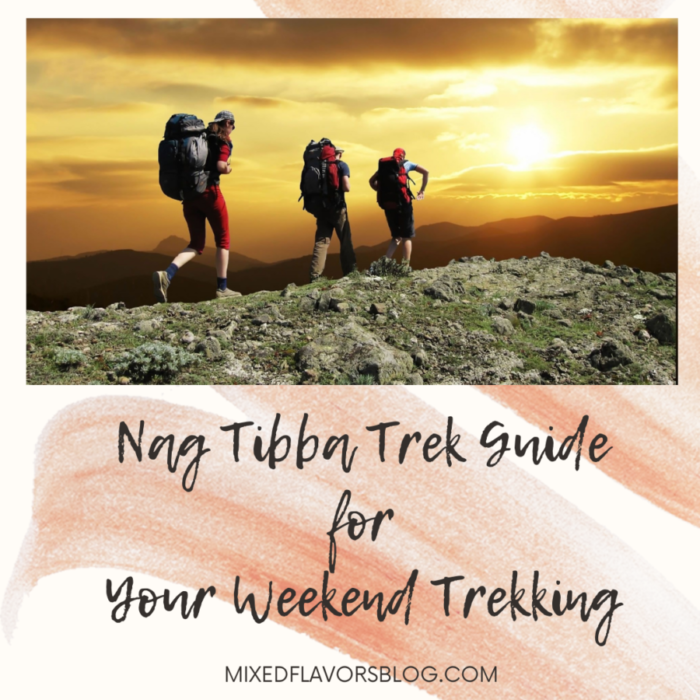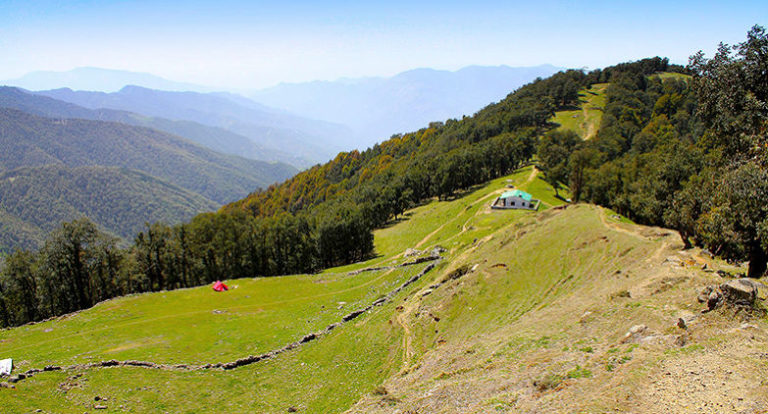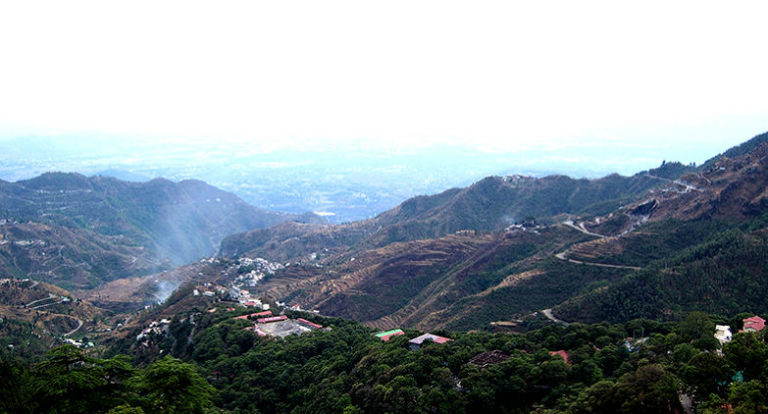‘Nag tibba’ means serpent’s peak. It is the highest peak in the Garhwal region of lower Himalayas. It is definitely one of the best treks in India. The summit of this trek rests at 9,915ft and is the highest in the Nag Tibba range. You can see snow-capped Himalayan ranges like Swargrohini, Bandarpoonch, Kala Nag, Gangotri, and Srikantha. The Kedarnath peak is especially visible in the north. This trek is for two days and you will experience a lot of different and vibrant landscapes, dense forests, and meadows. It’s an underrated trek trail near Mussoorie which has its advantages and disadvantages as well. Overall, it’s perfect for a weekend getaway. This place is also very important in Indian mythology. Snakes or Nagas, are prayed by the people throughout India. There are festivals, temples, and scriptures dedicated to snakes in India and they are closely associated with Lord Shiva. Nagas are believed to be sacred as they are believed to have received and blessed with a special place on the neck of Lord Shiva. Nag Tibba is named after Nagas.
History
Nag Tibba is known to be the abode of Nag devta or the God of Snakes. Nag means snake. ‘Tibba’ is a word used locally that means peak. Local villagers often come here to worship and offer flowers and receive blessings from Nag Devta. It’s at an elevation of 3048 meters. Nag Tibba has a temple at the top and from here you can also see Bandarpoonch range towards the side of Yamunotri.
Length of Nag Tibba trek
It’s a 16km long trek and can be covered in 2 days only. You have to cover nearly 8 km in a day in 6 hours. The trek is considered good for beginners.
Difficulty Level of Nag Tibba Trek
It’s an easy-moderate level trek. It’s good for families, friends, or a private weekend vacation. There are a few steep places in the trail but otherwise it has gradual terrain. You will find some difficulties according to the weather and terrain.
How to reach Nag Tibba
You can reach by public transport from Delhi which goes through Dehradun. There are buses and trains available.
READ HERE: Best Places to Visit in India
Trail information
To reach the summit it will be a long day and after you touch it, you start going down to Bhatwadi village. The trail is lovely and the views have healing properties and will bless your eyes. When you enter the Moriana clearing, you will find streams and huts which will give the sight of a perfect village setting. You can see the greenery embracing the whole place like a blanket. You will see trees stretched to as long as your eyes can see. The enchanting forest along with the sparkling streams make this place heavenly.
Best time to visit
The best time to attend Nag Tibba after monsoon when the weather is cool and there’s soft snow.
Months: February to mid-June and mid-September- November end. If you want to trek in the then December end and January are the best months to do so.
Nag Tibba Trekking Route
There are three trekking routes.
Trek route 1: This route begins from Devalsari ( 13 km). One can stay at the Forest Guesthouse. If you hike for 3 km more, you can reach the prime of Nag Tibba.
Trek route 2: This route starts from Panthwari Village ( 8 km). This is a popular route. Pantwari Village is at a length of 50 km from Mussoorie and 85 km from Dehradun. It’s one of the shortest routes but it requires a guide as it is complicated.
Trek route 3: This route begins from Hunter via Thatyur. You reach the bridge path near Aunter. From here you can walk up to the cliff top and the route is primarily straight from here.
Activities
- Sunsets are to die for. They keep you spellbound and tongue-tied.
- You can see snow-capped mountains like Swargarohini, Bandarpoonch, Kalanag, Srikanth, and Gangotri.
- You can see clouds below you.
- You can visit the temple at the top.
- You can have a panoramic view of the Bandarpoonch range.
- Nag Tibba trek is known to be a circular trek and you will be watching a lot of landscapes.
- You can click extraordinary pictures of the picturesque places present here.
- Trekking is a very sought after activity.
- You can also set camps under the clear night skies.
- You can do sightseeing.
- You can do star gazing.
- You can do a bonfire.
Precautions and Essentials
- Good condition trekking shoes are a must to guarantee a comfortable trekking experience.
- Wear light and comfortable clothes.
- Consuming alcohol and smoking are not allowed.
- Flashlight with extra batteries
- Complete trekking gear
- ID proof is required for all trekkers
- Take some water, food and dry fruits along with yourself.
- Carry a dual strap backpack (no sling bag).
- Carry mosquito repellent and sunscreen.
- Carry raincoats, winter jackets, first aid, and some extra clothes for emergencies.
- Carry minimum weight.
- Don’t litter.
- Stick to your assigned group and don’t wander on your own.
- Take care of your luggage.
- Carry your medicines if any.
- Carry your cameras and mobile phones at your own risk.
- Don’t put your life at risk for taking pictures.
READ HERE: Essential Safety Tips for Your Travel Plan
Nag Tibba is popular for weekend treks, hiking, Beginners trekking, Camping, Garhwal trekking, and easy trekking. Trekking at Nag Tibba is not that hard. It can be done easily by first-time trekkers. Mobile connectivity is low and internet services will be down but you’ll be able to do Digital detox and connect with nature. Captivating sunsets await you at Nag Tibba Trek. It is absolutely loved by adventurers all over the world because it does not only offer you beautiful and breathtaking scenic views but also provides you with that adrenaline rush that your body craves. Experience the mountain culture and food. Fall in love with everything Nag tibba trek has to offer. The people here are very affectionate and friendly. Throughout the trail, your mind will be blown by the gorgeous landscapes, forests, and grasslands. Further, it is an easy-moderate level trek which makes it available to beginners. The two-day trek is everything you need for that weekend break.







